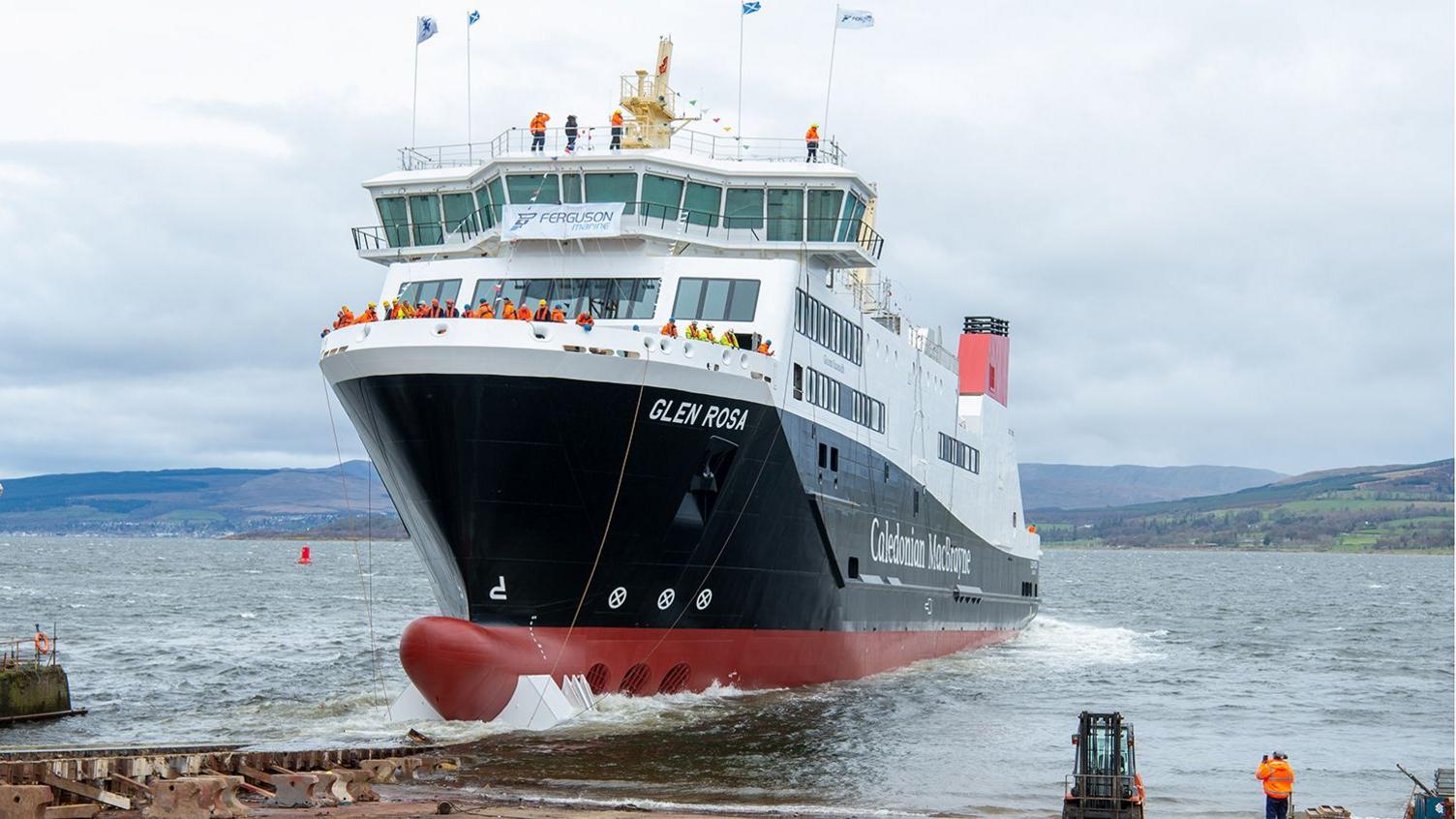Delivery delay confirmed for CalMac Glen Sannox ferry
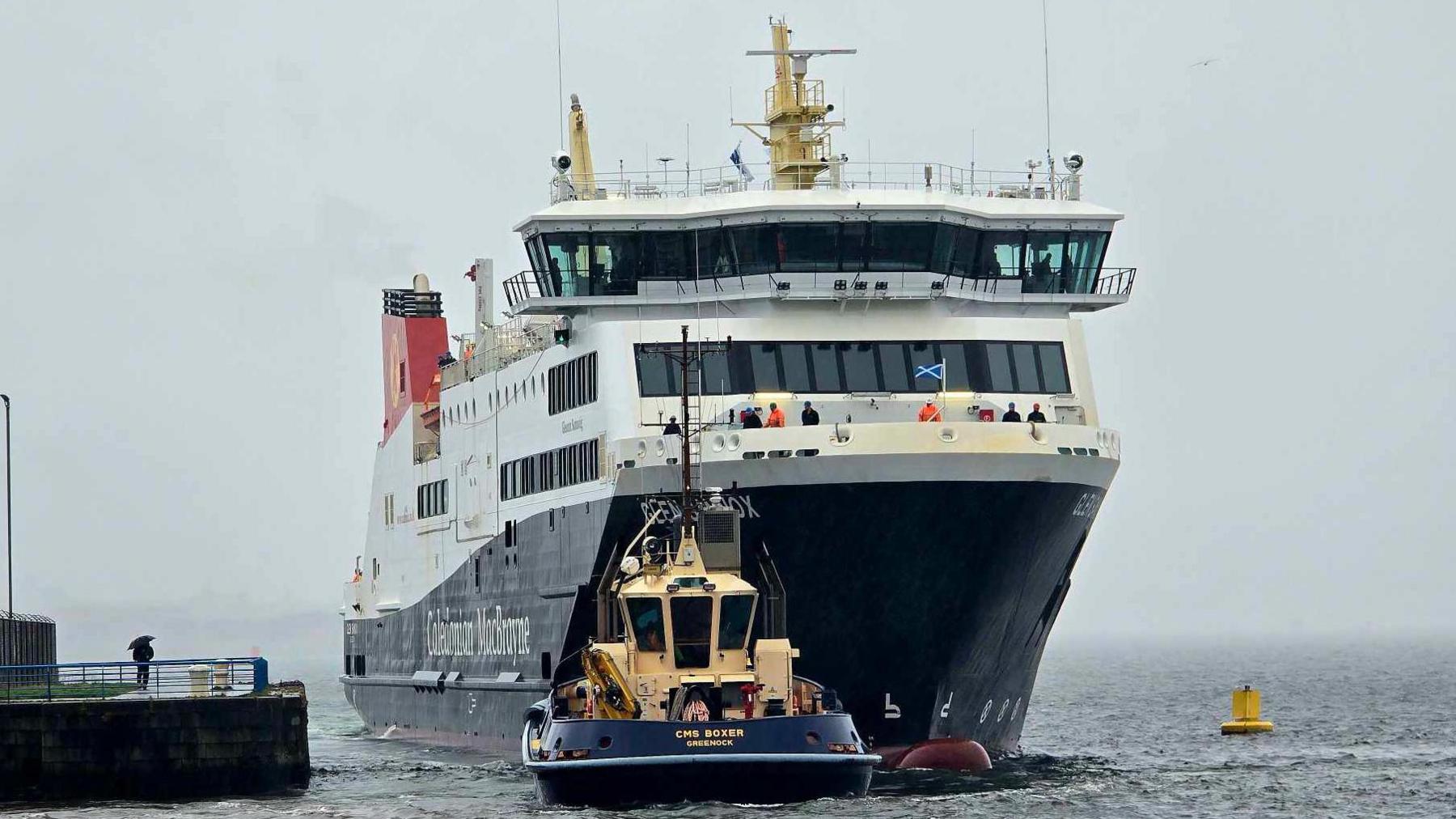
MV Glen Sannox will be delayed for a further two months.
- Published
The delivery of a long-delayed CalMac ferry has been put back again by two months due to issues with its dual fuel propulsion system.
MV Glen Sannox, being built at Ferguson shipyard in Port Glasgow, is now due to be handed over to ferries agency Caledonian Maritime Assets Ltd (CMAL) by 31 July.
It is the first liquefied natural gas (LNG) powered ferry constructed in the UK.
New Ferguson chief executive, John Petticrew, said its “complexity” and difficulty of installation was to blame for the delay.
New CalMac ferry successfully launches into River Clyde
- Published9 April 2024
The Ferguson ships nobody talks about
- Published26 November 2023
Mr Petticrew pointed to a “lack of available expert knowledge and qualified resources in the UK” around LNG systems.
In a letter to Holryood's net zero, energy and transport committee, he said: "The installation and commissioning of the LNG system, a first in class for UK shipbuilding, remains particularly challenging.
He added: "Regrettably this will result in a delay of the delivery of this fully commissioned dual fuel system vessel, now targeted for the end of July 2024.
"We appreciate and fully understand that there will be disappointment in all quarters."
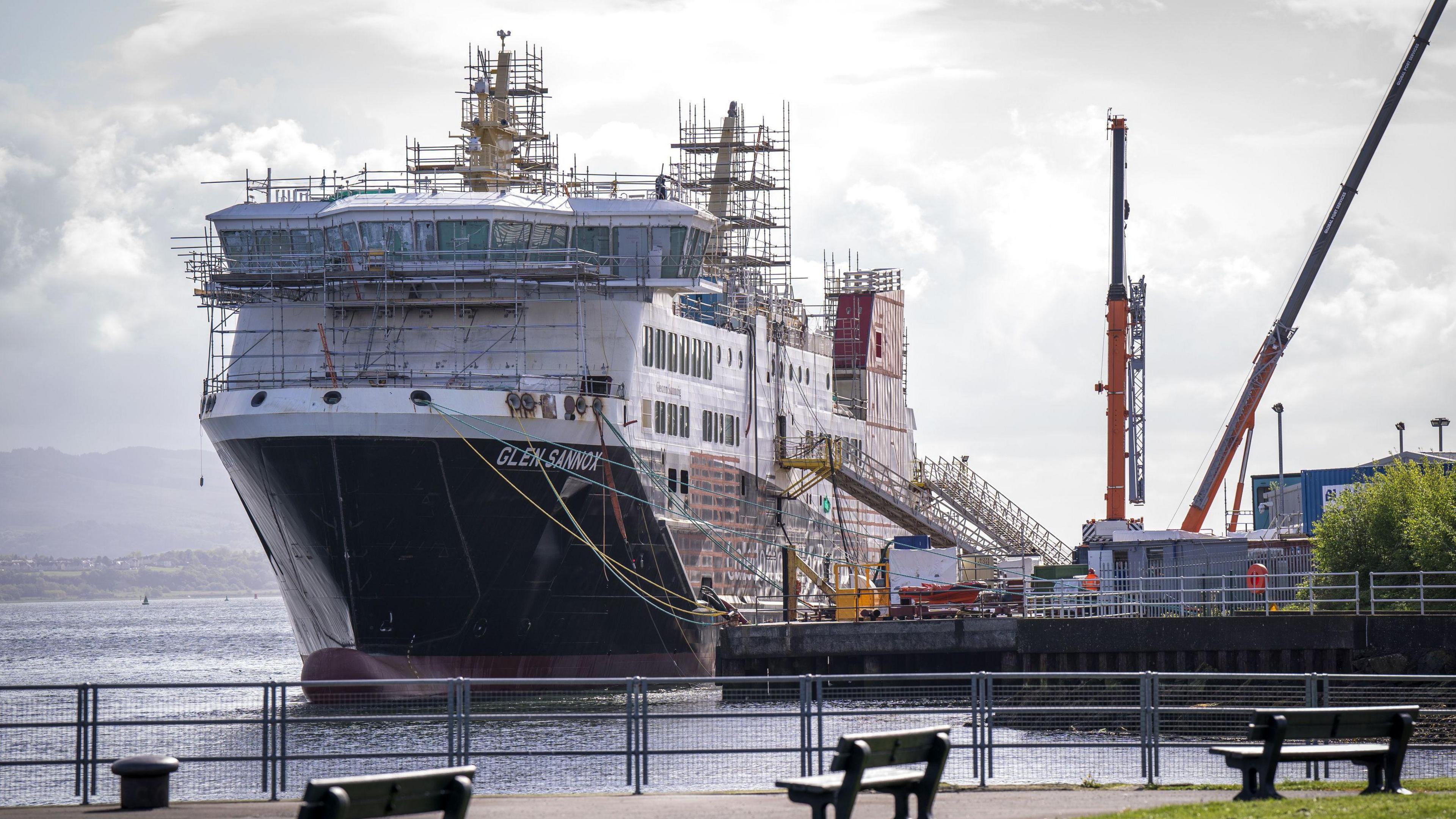
Issues with the ship's propulsion system have been blamed for the latest delay.
Scottish Conservative transport spokesman Graham Simpson MSP said the latest delay was "yet another huge blow to Scotland’s betrayed island communities".
He added: “It means that - after testing - another whole summer season will have gone by without desperately-needed new CalMac vessels being in operation, thanks to the SNP’s monumental incompetence.
“That’s another peak holiday season for hotels, restaurants and businesses completely at the mercy of a decrepit fleet that simply can’t be relied upon".
The LNG has to be kept at minus 162C to remain in liquid form and the shipyard is dependent on specialist contractors for much of the work.
Cost estimates to complete both Glen Sannox and its sister ship Glen Rosa remain unchanged, at just under £300m.
That figure does not include £83m paid for the ships prior to nationalisation, £45m of government loans that were later written off, or the cost of renewing expired warranties.
The ship will require up to two months of sea trials by operator CalMac after handover so is unlikely to enter active service until October.
'Lessons learned'
The update comes 10 days after the Glen Rosa was successfully launched at the shipyard.
The second ship will require more than a year of fitting out work at the quayside before planned delivery by the end of September 2025.
Mr Petticrew said the yard was "utilising lessons learned" in the Glen Sannox' construction to ensure there was no delay to that ship.
The contract for the two CalMac vessels was awarded to Ferguson Marine in 2015 and both vessels were originally due for delivery in 2018.
But the construction has faced design challenges and delays, with the yard falling back into administration.
It was subsequently nationalised, but problems continued and the cost of the ships has risen to about four times the original £97m contract price.
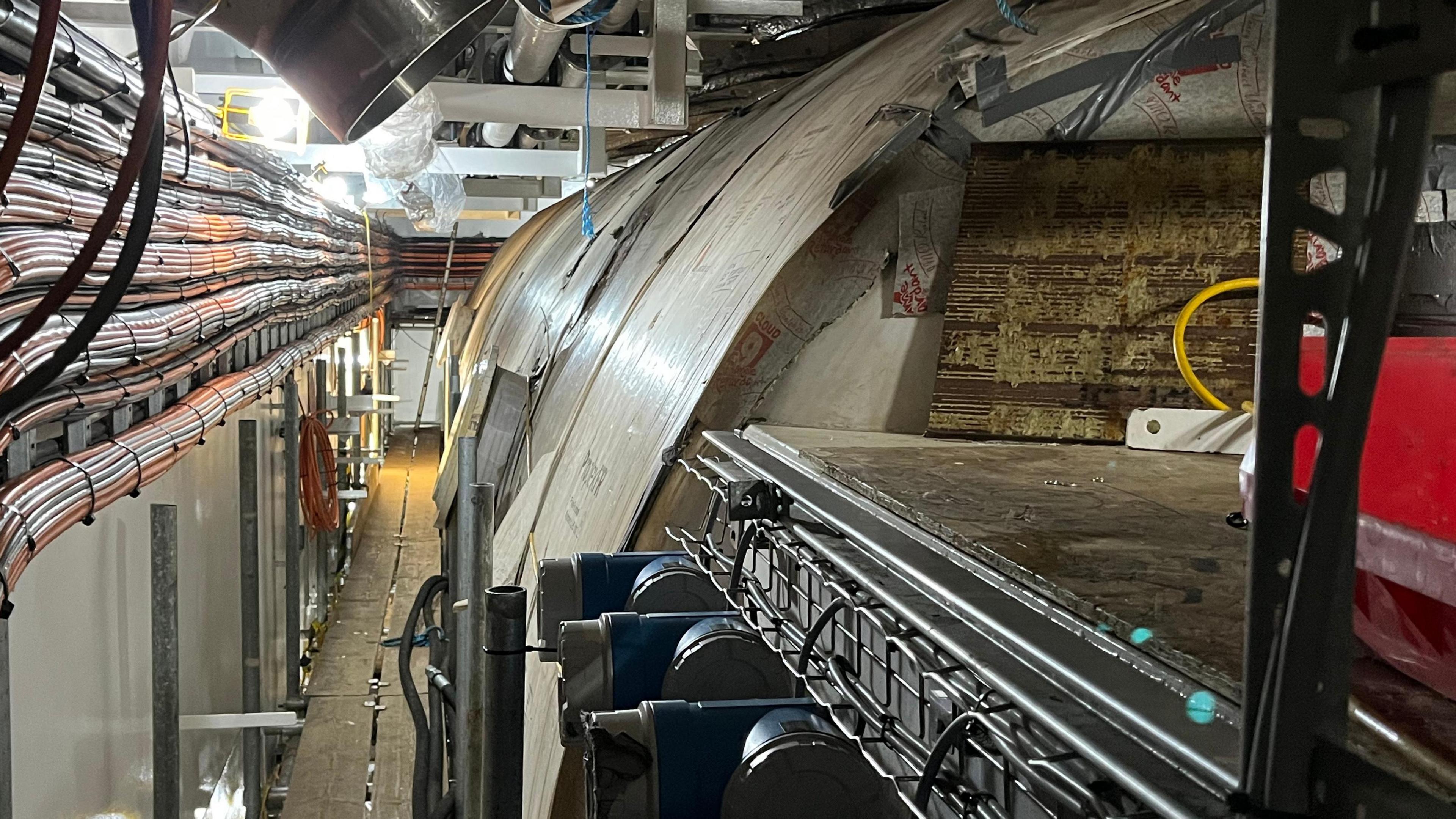
Glen Sannox requires a special insulated fuel tank and cryogenic pipework for its LNG propulsion system
Mr Petticrew replaced David Tydeman as interim chief executive in March.
The former Ferguson chief was sacked by the board after indicating that further delays were likely.
Opposition parties claimed that David Tydeman had been made a scapegoat for deep-seated problems he inherited when he took on the job two years ago.
Why are there so many delays with Glen Sannox?
The welding and fabrication by the Ferguson workforce has often been praised by government-owned ferries agency CMAL but the project has been plagued by design problems with much work having to be re-done repeatedly.
Naval architects and engineers struggled to deliver the ambitious specification for the ships and find ways of fitting in all the LNG equipment to the satisfaction of regulators.
Businessman Jim McColl, whose firm Clyde Blowers formerly owned the yard, claimed CMAL's "flawed" specification was largely to blame, and the ferries should have been treated as prototype vessels.
But CMAL insisted the technology was well understood, and the problems arose due to "catastrophic contractor failure".
Former boss David Tydeman has said a change of personnel and design contractors after nationalisation led to further difficulties as the new team familiarised themselves with the detail of the project.
He recently described how 27,000 drawings were sent to the shipyard by the new Romania-based designers during lockdown, when few staff were available at the yard to catalogue them, let alone check them.
The ship is extremely complex, with 16 different propulsion options, 12,500 pipe sections and 186 miles (300km) of cables - enough to stretch from Port Glasgow to Aberdeen.
Related topics
- Published26 November 2023
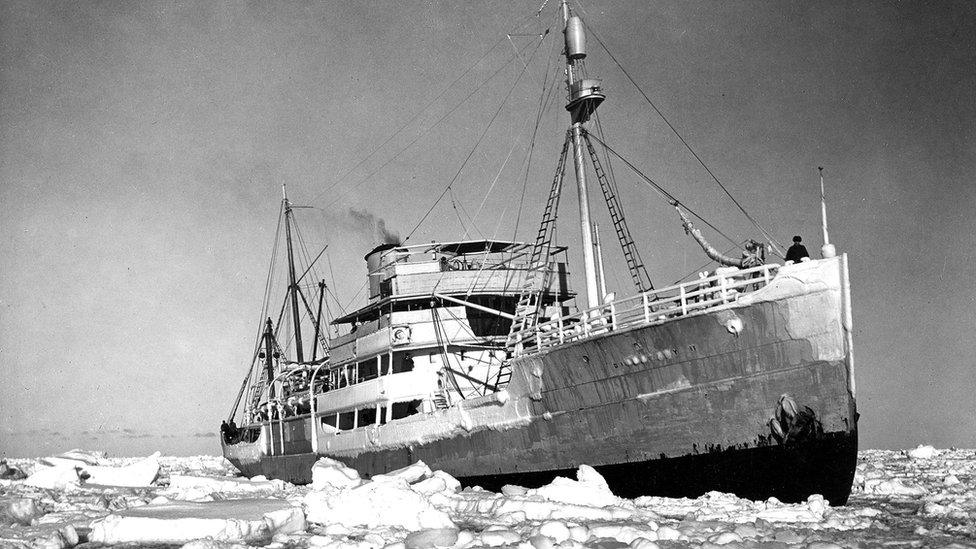
- Published9 April 2024
